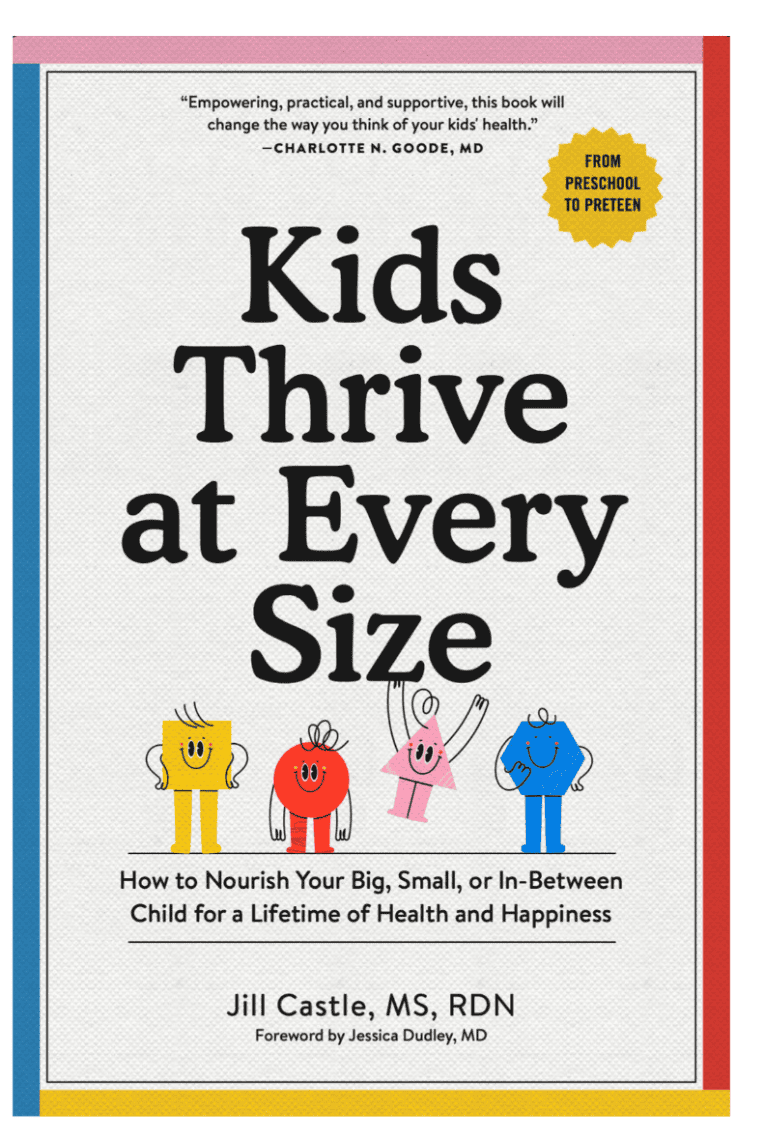Exactly When Do Boys Stop Growing? (Age, Timing, Genetics)
October 24, 2023
When do boys stop growing? Most boys will be done growing by age 17 or 18. Learn about when puberty starts in boys, including the boy’s Tanner stages, how the growth spurt unfolds, and when most boys will fully mature.
One of my most popular posts, 13 Signs of the Teen Growth Spurt, teases the answer to a question I get all the time: What age do boys stop growing? I get this question about when girls stop growing, too.
As a pediatric nutritionist and a mom, I know that growth spurts are individualized. While we have growth norms and Tanner stages, each individual child marches through puberty on their own time table.
In this article you’ll learn:
- The different stages of puberty for boys, including when the end of puberty occurs
- The physical signs that your boy is in puberty, including the Tanner stages of development
- The average age and progression of physical changes associated with growing during adolescence
- How to predict ultimate height status
- Signs of early and late puberty

Boy’s Puberty Stages
I have a permanent memory of a photo I saw long ago (I wish I could find it!) of 20 or so 17-year-old male teens lined up. The boys were ordered by height, from shortest to tallest. The boys on the shortest end looked like young middle school boys, while the teens on the tallest end looked like full-grown men.
This photo was a good representation of the wide variability in growth for boys as they go through puberty.
Girls aren’t quite so dramatic in their growth. I cover what age girls stop growing and other facts about puberty for girls so you know what to expect.
The First Signs of Puberty in Boys
Puberty doesn’t happen without a surge in hormones. For boys, that means a rising level of testosterone. This elevated hormone spurs the physical changes we see during the growth spurt in boys. This happens generally between ages 9 and 14.
The first sign of puberty in boys is the enlargement of the testicles. Following this, physical changes happen in the following areas:
- The testicles and scrotum
- Pubic hair
- Body shape changes
- Penis growth
- Voice changes
- Breast Development
Let’s explore each area.
Growth of the Testicles and Scrotum
During pubertal growth, these almost double in size. The skin of the scrotal sac thins, darkens, and the testicles hang lower. Hair follicles (bumps on the scrotal sac) appear.
Pubic Hair Development
Hair begins to grow at the base of the penis and darkens. Throughout puberty, this hair grows in a diamond pattern and spreads to the upper thighs and up to the belly button. Pubic hair grows prior to face, arm, leg, underarm, and chest hair.
Body Composition Changes
Boys appear thicker and heavier during the mid-teen years, right before puberty begins. Of course, some boys won’t look chubby at all.
The growth spurt happens for boys during the later stages of maturation. Boys layer on muscle (as opposed to girls layering on fat to their body composition) at this time.
Boys end physical maturation with 12% body fat on average.
Growth of the Penis
The penis grows in length first, then becomes thicker. Boys can develop an adult size penis as early as age thirteen and up to age eighteen.
Voice Changes
The voice box and vocal cords get bigger after the peak of the growth spurt. You’ll know this is happening as your son’s voice may crack.
This ends when the voice box is fully grown.
Breast Development
Yes, boys develop breast tissue too. In fact, it’s quite common for boys to have breast buds during puberty.
This is due to the hormone testosterone converting to estrogen (the female puberty hormone), through a chemical reaction in the body.
If your son has a firm breast bud under the nipple, this is why. It is called gynecomastia.
Gynecomastia typically resolves within one to two years. However, if gynecomastia occurs prior to puberty or late in the teens years, check in with your doctor.

Tanner Stages in Boys
The Tanner stages in boys represent two areas of sexual maturation: pubic hair and genital development. It allows your doctor to determine where your son falls along his pubertal development and adult maturation.
There are 5 stages beginning with Stage 1 (which means there is no sign of puberty) to Stage 5 which translates to full adult growth.
Doctors take these Tanner stages into consideration along with your kid’s growth to determine progress in physical maturity.
The Tanner Stages in Males
| Tanner Stage | Pubic Hair | Genital Development |
| Stage 1 | No hair at all | Testicular volume is less than 1.5 ml; small penis |
| Stage 2 | Downy hair with slight pigmentation | Testicular volume 1.6 – 6 ml; penis length unchanged |
| Stage 3 | Scant dark hair; coarse and curly | Testicular volume 6 – 12 ml; penis lengthens |
| Stage 4 | Hair that fills the triangular area around the genitals | Testicular volume 12- 20 ml; penis lengthens |
| Stage 5 | Hair that extends beyond the genital area onto the thighs | Testicular volume greater than 20 ml; adult scrotum and penis |
The Biggest Growth Spurt Can Be Seen on the Growth Chart
The Centers for Disease Control and Prevention (CDC) has growth charts for girls and boys, aged 2 to 20 in the U.S. Growth charts track weight, height and body mass index (BMI) over time.
The pattern of growth and percentile channel your child grows along is a good indicator of whether your child is growing normally.
If you’re worried about your son’s weight, read Teenage Weight Gain: What You Can Do and 6 Common Reasons Your Teen is Gaining Weight.
Also, it helps to get a sense of what to expect with your teen’s development and their nutritional requirements. There are a lot of changes happening with social and emotional development, too!
Average Boy Height Based on Age
On the growth chart, the 50%ile is considered the “average” height for a boy at a particular age. In other words, it is the mean height for age.
However, height varies widely, with some boys growing at the 5% ile for height, at the 95%ile for height, and at many percentiles in between. Your son’s height is influenced by his genetic makeup.
- Average Height for a 9 year old boy 52”
- Average Height for a 10 year old boy 54.5”
- Average Height for a 11 year old boy 56.5”
- Average Height for a 12 year old boy 58 2/3”
- Average Height for a 13 year old boy 61.5”
- Average Height for a 14 year old boy 64.5”
- Average Height for a 15 year old boy ~67”
- Average Height for a 16 year old boy 68 1/3”
- Average Height for a 17 year old boy 69”
- Average Height for a 18 year old boy 69 1/3”
Height Calculator for Boys
The growth pattern on the growth chart is one of the best predictors of final adult height. Follow your child’s height growth percentile (the channel where he’s actually been growing) to age 20 (the end of the curve) for a rough estimate of his final height.
Alternatively, you can use a common calculation based on combining both parents’ heights and factoring in variances for males.
This is usually done by combining parental height, adding 5, and dividing by 2.
Here’s an example: I am 5’8″ and my spouse is 5’10”.
68″ + 70″ = 138″
138″ + 5″ = 143″
143″ divided by 2 = 71.5″ or 5′ 11.5″
Based on this estimated height calculation, my son should grow to be almost 6′ tall. From the looks of it now, it doesn’t seem like he’ll get there, but he’s still in the growing phase, so time will tell.
Height predictors like this should be taken with a grain of salt. They simply give you a range, and some experts say there is a 3 inch range on each side.
To put that into context, my son could be anywhere from 5′ 8.5″ to 6′ 2.5″. That’s quite a range of possibility!
Here’s a printable height predictor tool.
Average Weight in Boys
The weight of your son can be tracked on the growth chart, too. While height is influenced (strongly) by genetics, your son’s weight has more to do with eating habits, food choice, physical activity and more.
Yes, there can be a genetic influence, particularly with a tendency towards carrying more body fat, however, your son’s eating environment and lifestyle habits set the foundation for weight and health.
Growth Spurts in Boys
The growth spurt in boys is the peak of growth during adolescence. It follows the beginning of puberty, typically starting around age 14 or 15 and ends around age 17 or 18.
It’s an intensive three years! Of course, every boy is different. Some boys begin the growth spurt earlier and others later.
Early Bloomer (Early Puberty for Boys)
Early puberty, or precocious puberty, begins before age 9 in boys. It occurs when the hypothalamus in the brain signals the secretion of testosterone. As a result, the physical changes including body odor, pubic hair, penile growth, acne, facial hair, voice changes and rapid height growth happen earlier than expected.
Precocious puberty is less common in boys than girls. Boys who go through early puberty may not reach their adult height potential if left untreated. Talk with your doctor if you suspect your son has signs of early puberty.
A Late Growth Spurt
Some boys are late bloomers, entering puberty later than expected. If puberty hasn’t started by age 14, it is called delayed puberty. Your doctor can help you decide how to manage this, if at all.
When Do Boys Stop Growing in Height?
If you follow your son’s growth chart you’ll see it begins to flatten out around age 18 -20, indicating linear growth is slowing down and full adult height is nearing.
However, boys who enter puberty later may continue to grow into early adulthood.

How Long Does Puberty Last?
Every boy has on his own trajectory with growth. It’s hard to say when adult height will be reached. Most will be done by age 17 or 18, however, some will continue to grow into the early 20’s.
However, if you stay informed about your son’s height and growth over time, you will begin to notice his patterns and get a sense of where he’ll end up, height-wise.
Certainly, a balanced diet with good nutrition, enough sleep, and staying physically active on a regular basis will help your son grow to his full potential.
What Causes Short Stature?
Short stature can be caused by a variety of medical conditions, it can be related to genetic factors, or the result of chronic malnutrition.
Health conditions such as celiac disease, a growth hormone deficiency, Cushing’s disease, and delayed puberty are among the most common medical explanations for short stature.
Boys who don’t get adequate nutrition for long periods of time, especially protein content, may experience stunting, a condition where height growth stalls.
Resources
- Physical Development in Boys: https://www.healthychildren.org/English/ages-stages/gradeschool/puberty/Pages/Physical-Development-Boys-What-to-Expect.aspx
- CDC Growth Charts: https://www.cdc.gov/growthcharts/index.htm
- Delayed Puberty: https://www.healthychildren.org/English/ages-stages/gradeschool/puberty/Pages/Delayed-Puberty.aspx
This post was updated in November 2022.

Jill Castle, MS, RD
I like empowering parents to help their children and teens thrive at every size with realistic advice centered on healthful habits around food, feeding, nutrition and health behaviors. As a pediatric dietitian and author, my goal is to share strategies and realistic advice to help you raise a healthy and happy child through my articles and podcast.




